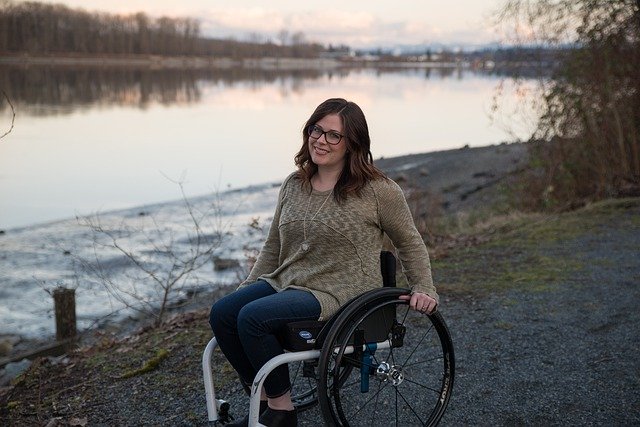
What are famous employment discrimination cases or job discrimination cases?
In many ways, employees today are in a much better position than those from decades ago. U.S. workers have seen many of their rights expanded. These rights have come in the form of legislation, especially for California state employees, but also through significant court rulings. The judicial branch, while not always pro-worker, has on occasion been a great boon to the nation’s workers, particularly when it comes to protection against unlawful discrimination. Let’s look at some of the most significant job discrimination cases from the past several decades.
- Griggs v. Duke Power (1971)
In this groundbreaking case for racial discrimination, a group of African-American employees sued their employer, Duke Power Company, for a policy that required a high school diploma as well as satisfactory scores on two general aptitude tests for an employee to advance. Duke Power Company had a history of openly discriminating against African-American employees by only permitting them to work in the worst-paid division of the company. However, this was before the Civil Rights Act became effective in 1965. Among other things, Title VII of the Civil Rights Act officially prohibited employment discrimination based on race. After it was put into effect, Duke Power could no longer openly discriminate against African Americans. Instead, they instituted the aforementioned policy, one that required employees to meet the degree and test criteria before they could be promoted to higher divisions within the company. The required aptitude tests did not assess job-related skills. Duke Power’s new policy resulted in a disproportionate number of African Americans being unable to obtain positions with higher pay, so they were sued, the petitioners alleging that the policy violated the Civil Rights Act, specifically Title VII.
The case eventually made it to the Supreme Court, which sided with the plaintiffs. The Court decided that the policy, as it was not linked to job performance and was disqualifying African-American employees at a higher rate than white employees, violated Title VII. Moreover, the Court asserted that Title VII bars employers from implementing facially neutral policies, but discriminatory in effect. By asserting that unintentional discrimination is also unlawful, Griggs v. Duke Power laid the foundation for disparate impact cases in the future, and its legacy continues to protect workers today. - Price Waterhouse v. Hopkins (1989)
Another Supreme Court case, Price Waterhouse v. Hopkins, was revolutionary for sex discrimination and mixed-motive cases. Ann Hopkins, the plaintiff, sued the accounting firm that had employed her, Price Waterhouse, for violating Title VII. She claimed that they denied her partnership two years in a row based on her failure to conform to gender stereotypes. After working there for five years and securing a $25 million government contract, she was proposed for partnership, but it was put on hold until the following year. The following year, the board refused to put her up for partnership, which is when she sued. At Price Waterhouse, there were exactly 7 women who were partners- out of 622 partners. The process of selecting new partners relied on recommendations from current partners, some of whom made it clear they did not want women in advanced positions. Furthermore, the accounting firm admitted that Hopkins was qualified, and she likely would have been proposed for partnership if she had done things like wearing more makeup and jewelry or speaking and moving more femininely. They claimed she needed to work on her interpersonal skills.
Ultimately, the Court recognized that sex stereotyping could be considered illegal under Title VII. In this case, the company was in the wrong for using sex stereotypes to inform their decision about the plaintiff’s promotion to partnership. More generally, it was held that no employment decisions can be based on sex stereotyping, like the idea that women must not be aggressive. Furthermore, the case dealt with the issue of mixed motives. Price Waterhouse cited interpersonal skills as a reason for not promoting Hopkins. There was evidence that the decision not to allow her promotion was based on both that reason and her failure to conform to gender stereotypes. Hence, the case was complicated by the existence of mixed motives. The Court held that the employer has the burden of proving that the adverse employment action would have been the same if sex discrimination had not occurred. In this case, Price Waterhouse failed to prove that. This case, then, set a precedent for thousands of future cases about not only sex stereotyping but also mixed motives. - E.E.O.C. v. Abercrombie & Fitch Stores, Inc. (2015)
More recently, the Supreme Court made strides for workers suffering from religious discrimination in hiring. In the case of the Equal Employment Opportunity Commission v. Abercrombie & Fitch Stores, the E.E.O.C. sued on behalf of Samantha Elauf, a Muslim-American woman, alleging a violation of Title VII, which prohibits religious discrimination in employment decisions. At 17 years old, Elauf applied for a job at an Abercrombie & Fitch store. During her interview, she was wearing her headscarf, a common religious garment worn by Muslim women. The person who interviewed Elauf was impressed with her but worried about her headscarf because the store had a dress code policy prohibiting hats. The interviewer let the manager know that she believed Elauf wore the scarf for religious reasons, and the manager responded by declining to hire her, citing the dress code policy.
A big issue in the case was that Elauf had not explicitly requested a reasonable accommodation to be made for her. She had not asked for the store to make an exception to the dress policy for religious reasons. However, in the end, the Supreme Court ruled in favor of Elauf, holding that she did not have to explicitly ask for accommodation to be protected by Title VII. Essentially, it was deemed wrong for the manager to refuse to hire her because of what was thought to be a religious practice, even though that thought was not confirmed by the plaintiff. Knowledge of the need for religious accommodation, in other words, is not required for protection under Title VII, as motivation matters in a way actual knowledge does not. In the future, workers will have this decision to refer back to if their rights are ever violated similarly. While those are a few highlights of landmark cases, they are certainly not the only cases that have advanced workers’ rights over the years. However, they do illuminate how the law can be interpreted in different ways and how it can be complicated to determine how the law protects workers. When in doubt about whether or not discrimination law protects against a certain situation, employees can contact an experienced employment lawyer to help them figure out their rights. If those rights have been violated, an employment lawyer can help them seek justice in the same way Elauf, Hopkins, and Duke’s employees did years ago, and perhaps they too will leave a laudable legacy for future workers to take refuge in.




Before returning back to work from my 12 weeks of FMLA, December 18, 2019 through March 25, 2020, I submitted request for accommodations paperwork to be in place for when I return to work. I have visual impairments, ADHD, anxiety, depression, need more time to learn tasks. I submitted paperwork in February 2020 and didn’t receive accommodations until July 2020. I requested a larger monitor, more time in training and didn’t receive either. The work I did required reading a lot of information from a spread sheet, that I couldn’t see very well, so I made errors. I made hipaa errors, sending the wrong patient information to the wrong provider, however, all were in the network. I was let go after the fourth error like that. I explained that the member’s information looked so much alike on my small screen but they still let me go. I had been with this company for almost 5 years and I had always gotten great performance reviews. I used to work 12+ hours a day just to get my work done, bc it was very hard for me to see the spreadsheet and it was a lot of dynamics going on throughout the day. I requested another position, which I was entitled to do, per ADA rules. My request was denied. The job I had requested to be transferred to would’ve been a better fit for me, Nurse Coach. I’m requesting that you all look into this matter.. EEOC investigators said my case had merit, but they were not able to pursue it at that time. My case has been resubmitted to them for reconsideration.
Chris didn’t alert me that the 90 days wouldn’t start over